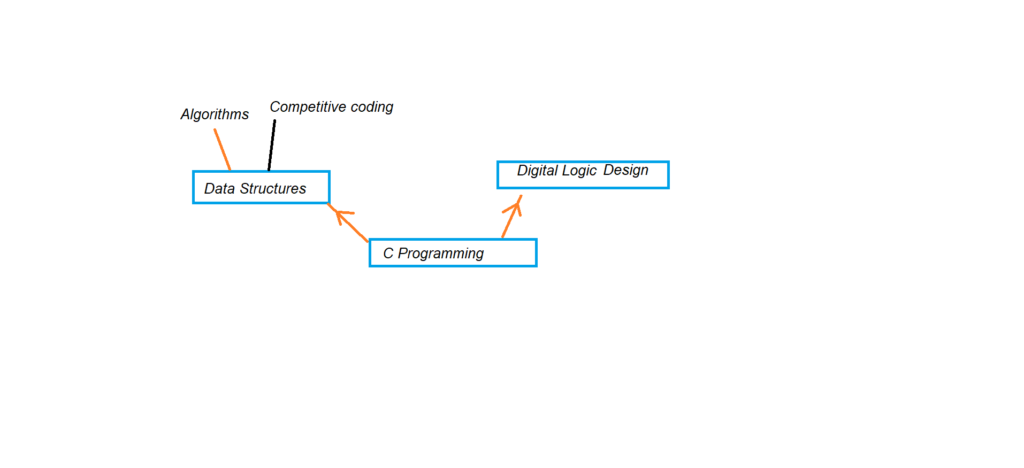Points Before Studying Digital Logic Design
In this class, We discuss Points Before Studying Digital Logic Design.
The reader should have a prior understanding of the need for hardware for CSE Students. Click Here.
In our previous classes, we discussed the first subject a computer science student started his career as, C Programming.
After completing C Programming, he starts studying data structures to improve his coding knowledge.
After completing data structures, we move to algorithms and competitive coding according to requirements.
We also discussed the importance of hardware in understanding today’s technologies.
Simply having coding knowledge is not enough to understand today’s technologies.
The students should have some basic understanding of hardware also.

After completion of C, Programming students can start studying Digital Logic Design.
Digital logic design is the first subject to gain knowledge on the hardware side.
Below we will explain to you the level of understanding students will achieve after completing Digital Logic Design.
The level of hardware understanding needed for CSE Students is
1) Simple processor design
2) Memory organization
3) I/O interaction
The hardware devices above consist of large integrated digital electronic circuits.
As computer science students, we do not have any understanding of digital electronic circuits.
The two subjects that help the students to understand the design of circuits is.
1) Digital Logic Design
2) Computer Organization and Architecture.
Study all the subjects at learning monkey for free to achieve knowledge.
What is the level of understanding we get after completing Digital Logic Design?
Up to now, we do not have any knowledge of Digital or Binary Numbers.
The subjects start with 1) Digital or Binary Number System.
The second session deals with 2) digital logic or digital algebra.
To construct large circuits, we need some logic.
In this session, The logic needed for constructing circuits is explained.
Based on the basics from the second session. We will construct small circuits in our next session.
3) Combination and sequential circuits
You can construct small combinations and sequential circuits at the subject’s end.
Using the knowledge to design simple combinations and sequential circuits, we will design processors, memory, etc.
Using the basics, we study the next subject, Computer Organization and Architecture, to design simple processors and memory.
